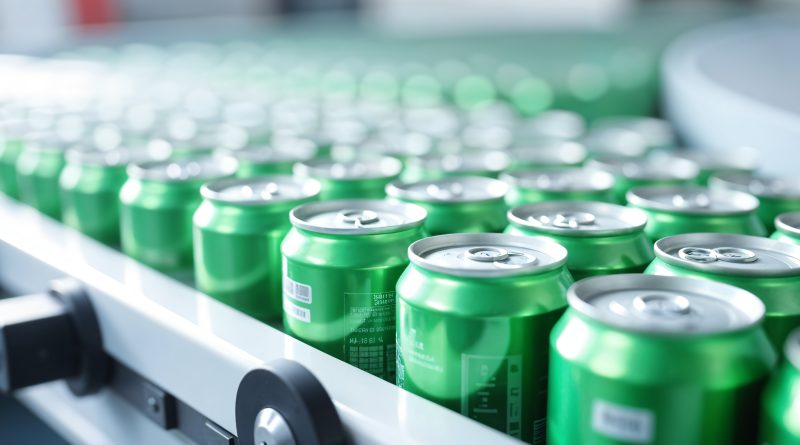25% tariff on beer imports raises costs for US consumers
Subscribe to our free newsletter today to keep up to date with the latest manufacturing news.
The administration has expanded Section 232 tariffs to include a 25 percent duty on imported beer and empty aluminum cans. The rationale remains similar, to strengthen domestic aluminum production, but this time the scope is more targeted.
The choice of beer and packaging materials reflects a calculated move. These items are highly visible, consumer-facing products that carry both economic and symbolic weight. Aluminum demand in packaging has grown in recent years, and beverage producers continue to rely on imports to meet supply chain needs. This makes the policy particularly relevant to a broad mix of industries and voters.
Why beer and beverage imports were targeted
The focus on beer cans and beverage packaging is not incidental. The U.S. imported over $7.5 billion worth of beer in 2024, with leading suppliers including Mexico, the Netherlands, Ireland, and Canada. Empty aluminum cans, crucial to beverage manufacturers, are also widely sourced from abroad.
According to the White House, the decision was made to address trade imbalances and support American manufacturing. Domestic aluminum production has grown slightly since the original 2018 tariffs, but capacity still lags behind demand. Imported cans remain cost-effective and reliable, which has made them a consistent choice for manufacturers.
What the tariffs mean for beer companies and their suppliers
For beverage companies, the cost of doing business just increased. Constellation Brands, a major importer of Mexican beer, is one of the firms likely to see the sharpest impact. Smaller breweries and private-label suppliers, many of which rely on imported packaging, may also feel the strain.
U.S.-based can producers are already operating at near capacity. That limits the ability of manufacturers to switch suppliers quickly. In the short term, companies may need to absorb cost increases, pass them to consumers, or delay product rollouts due to packaging shortages.
Even for domestically brewed beer, aluminum is often sourced globally. While some U.S. smelters have reopened in recent years, most packaging-grade aluminum continues to come from foreign sources due to pricing and production efficiency.
The effects will likely spread across the packaging industry. Higher material costs could affect everything from energy drinks to canned soups. Retailers may pass those increases on to shoppers, which could ultimately reduce consumption in more price-sensitive markets.
Industry response and trade implications
Trade groups reacted quickly to the announcement. The Beer Institute and Consumer Brands Association issued statements warning of job losses, price hikes, and downstream disruption. Their concerns reflect the central role aluminum cans play across the consumer products ecosystem.
Canada and Mexico have also indicated that they may consider retaliatory tariffs. In 2018, similar U.S. tariffs led to countermeasures that affected bourbon, motorcycles, and other symbolic exports. A second wave of trade conflict could expand the scope of economic disruption far beyond the beverage industry.
Some lawmakers back the tariffs as a tool to revive domestic jobs. Others, especially those representing consumer industries or agricultural exporters, worry about retaliatory consequences and the inflationary effects of the policy.
Beverage companies are now reviewing their operations. Some may shift production facilities or sourcing strategies, but these adjustments are expensive and slow to implement. For many businesses, the path forward involves absorbing short-term losses and hoping for policy reversals or exemptions.
The bigger concern is uncertainty. Tariff expansions on seemingly low-risk categories, like beer and packaging, shake business confidence in future trade stability. That may weigh on investment decisions for years to come.
How consumers and retailers are likely to be affected
Consumers will begin to see higher prices on canned beverages by mid-2025. Analysts project that prices for a six-pack of imported beer could rise by as much as 12 percent. Even domestic brands may see modest increases, as canning costs ripple across the industry.
Distributors may experience delivery delays and reordering constraints, particularly for high-demand products like imported lagers or specialty craft brews. Inventory management will become more complex and costly.
This tariff expansion is part of a broader shift in how the U.S. approaches trade and manufacturing policy. The administration is aligning itself with voters who favor economic nationalism, and tariffs remain a highly visible lever for delivering that message.
While this move is consistent with Trump’s broader trade philosophy, it also introduces risks. Trade partners may respond with new tariffs of their own, and businesses may hold off on investment due to supply chain instability. The policy benefits the aluminum industry but introduces pressure for every downstream user of packaging materials.
